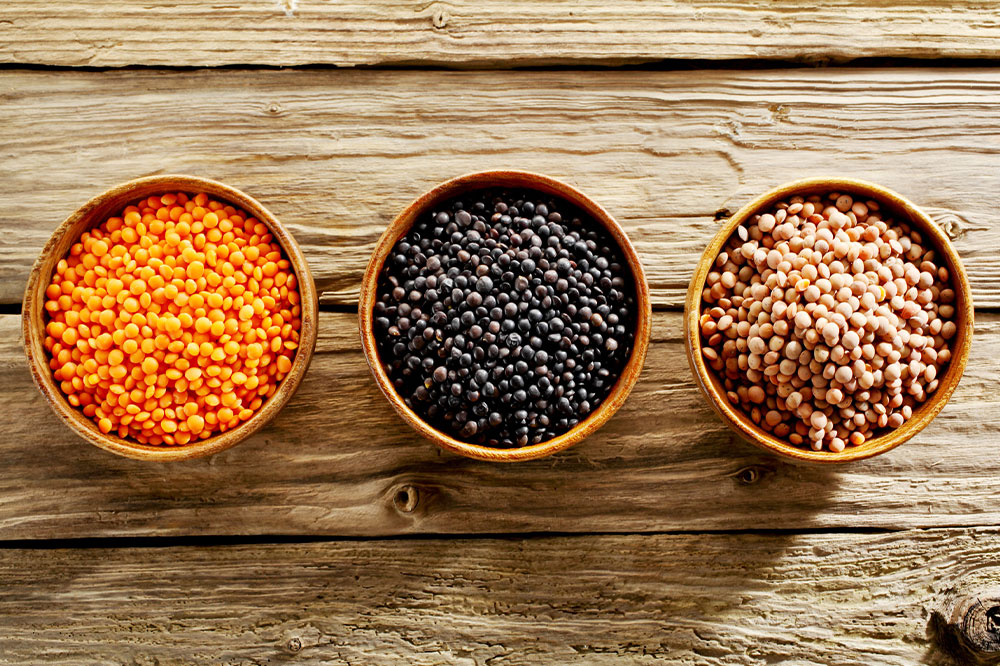
10 Foods to Eat to Manage Period Pain
Do you ever dread that time of the month, with period pain making it difficult to focus on anything else? It’s common for women to experience uncomfortable cramps and bloating before the start of their menstrual cycle. However, natural ways, such as hot water bags and certain foods, can help somewhat manage the discomfort. Check out ten healthy food items one can incorporate into one’s daily meal plan for managing period-induced cramps and body pain.
What is period pain?
Period pain (dysmenorrhea or menstrual cramps) is common for many women during their menstrual cycle. This pain varies in severity and tends to be felt in the lower abdomen and pelvic area. The primary cause of period pain is contractions of the uterus during menstruation, which may affect daily activities, such as walking, working out, or concentrating, if severe. In some cases, hormone imbalance (high prostaglandin levels) or heavy bleeding can contribute to the intensity of pain experienced.
Period pain typically occurs in the days leading up to or during menstruation. PMS, or pre-menstrual syndrome, usually involves cramps and other uncomfortable physical symptoms such as bloating, fatigue, sore breasts, and headaches. Thus, managing this pain becomes imperative, especially when you have important events to attend, such as going to work/school or heading out for grocery shopping.
Foods to eat to relieve period pain
Lentils
Lentils contain isoflavones and phytoestrogens that mimic the effects of estrogen (which the body needs to reduce cramps) and help reduce inflammation. Eating lentils regularly can relieve cramping and other symptoms associated with period pain. They are also great for increasing iron levels in the body, which in turn helps to reduce fatigue, one of the most common symptoms associated with periods.
Quinoa
Quinoa is a grain-like seed with essential nutrients proven to combat period pain and mood swings. One of quinoa’s main benefits is its high mineral content—magnesium and manganese, both known for their anti-inflammatory properties.
Additionally, the high-quality protein found in quinoa can help balance hormones more effectively by providing more tryptophan. It is an amino acid needed to form serotonin, which is responsible for regulating emotions and alleviating overall discomfort during menstruation.
Yogurt
Eating yogurt has been shown to decrease period pain and discomfort significantly. Studies suggest that yogurt’s probiotics (good bacteria) help balance the body’s hormones. Additionally, probiotics help reduce inflammation, the primary cause of menstrual cramps.
Yogurt is rich in calcium which directly reduces muscle contraction, preventing cramping. To maximize the benefits of eating yogurt, choose plain varieties with minimal added sugar or artificial sweeteners.
Nuts
Eating nuts can be an effective way to reduce period pain. It is because nuts are a great source of magnesium, which is known to help relax muscles, regulate hormones, and decrease inflammation. Further, the healthy fats in nuts can also improve blood flow throughout your body and make you feel more relaxed. Thus, switch your evening snack to cashews, walnuts, and almonds.
Dark chocolate
Eating dark chocolate may be one of the more delicious ways to reduce period pain. First, the powerful antioxidants found in dark chocolate help lessen inflammation, which is a major culprit for menstrual cramps. Additionally, dark chocolate is high in magnesium, which helps relax muscles and ease pain.
Turmeric
This miracle spice contains powerful anti-inflammatory effects, primarily due to its component curcumin. This compound helps reduce uterine muscle contractions, often the root cause of menstrual cramps and accompanying pain.
Additionally, this vibrant yellowish spice can help modulate the production of prostaglandins. These chemicals contribute majorly to heavy bleeding and migraine-like headaches during menstruation. Thus, add turmeric to your meals and teas if you haven’t already.
Flaxseed oil
Flaxseed oil has been shown to help reduce the severity and duration of period pain. It is due to its high concentrations of alpha-linolenic acid (ALA) and omega-3 fatty acids, known to decrease inflammation. In addition to reducing period pain, flaxseed oil can help regulate hormones and boost the body’s overall health and well-being. By supplementing your nutritional regime with flaxseed oil regularly before and during your menstrual cycle, you can lessen the discomfort associated with your periods.
Ginger
Ginger is beneficial in reducing inflammation and ultimately relieving cramping. The active component of ginger, gingerol, helps block prostaglandins, reducing muscle contractions. Studies indicate that eating about one gram of dried ginger powder for the first three days of menstruation can drastically reduce menstrual pain. Additionally, eating fresh or candied ginger daily helps reduce bloating and any gas associated with period cramps.
Chicken
Eating chicken has been known to relieve period discomfort. Chicken is an excellent source of iron, an essential mineral for healthy blood flow during menstruation. It is also rich in proteins that help regulate hormones and calm the uterus. Additionally, chicken contains vitamin B6, which helps fight nausea and menstrual pain.
Fresh fruits
Fruits have been scientifically proven to reduce period pain in women. They contain essential nutrients, such as antioxidants and vitamins, that help reduce inflammation, one of the most common causes of period pain.
An additional benefit of eating fruits during a menstrual cycle is increased energy levels. Eating electrolyte-rich fruits such as oranges and bananas can help replenish lost energy and give you the boost needed to fight cramps. Moreover, fruits are high in fiber which can help minimize bloating and the discomfort of period cramps.
Managing period pain can be difficult. However, making healthy food choices can help combat such issues. With proper nutritional modifications and a healthy lifestyle, women can maintain a better sense of well-being during their menstrual cycle. As everyone’s body is different, the best way to determine the types of foods that will work for you is by experimenting with different combinations over time. Whether through exercise or healthy food habits, every woman should feel empowered to maximize her reproductive health.





